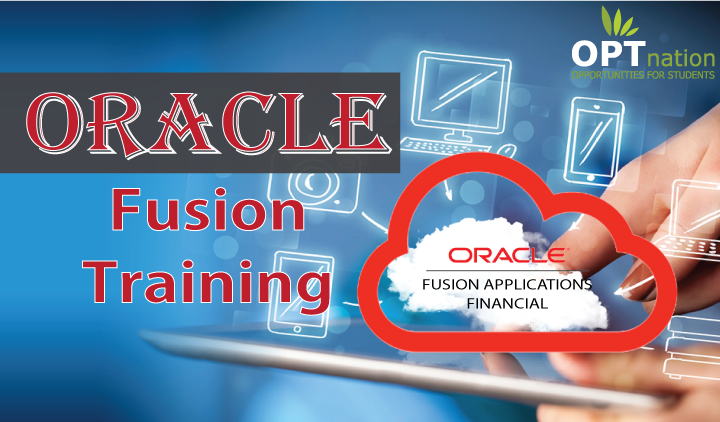Oracle Fusion is a combination of two parts: OFA (Oracle Fusion Applications) and OFM (Oracle Fusion Middleware). OFA and OFM are used to develop different types of business applications. OFM offers technology to deploy, develop, and manage SOA; it also helps in developing JAVA applications.
Oracle Fusion is also known as OFA. It embraces a wide range of modules: supply chain management, human capital management, governance, financial management, procurement, customer relationship management, and project portfolio management. It is Oracle’s broadest portfolio of CRM solutions. It addresses all touch points related to customer and provides rich functionality supporting the organizations’ specific business needs and deliver a superior customer experience.
It is from Oracle Corporation a standards-based technology reference architecture/blueprint for building applications.
❯ Introduction to Fusion and ADF
- Architecture of Fusion
- What is ADF (Application Development Framework)
- How ADF fits into the Fusion architecture
- ADF technology stack (MVC)
❯ Introduction to Oracle Fusion Middleware 11g
- Concepts
- What is WebLogic server
- Domain of WebLogic server
- Administration server
- Managed server
- Metadata repository
- Directory structure in Fusion Middleware
- File system in Fusion Middleware
❯ Getting started with JDeveloper
- Benefits of JDeveloper
- Features of the JDeveloper IDE
- What are IDE preferences
- Creating applications, projects, and connections in JDeveloper
❯ Building a data model with ADF business components
- ADF business components
- Creating business components from tables
- Testing the data model
❯ Querying and persisting data
- Using view objects
- Using entity objects to persist data
- Creating associations
- Creating updateable view objects
- Creating master-detail relationships
- Refactoring
❯ Exposing Data
- How to create application modules
- Use of master-detail view objects in application modules
- Managing transactions
- Abstracting business services with ADF model
❯ Declaratively customizing data services
- Internationalization of the data model
- Default behavior modification of entity objects
- Editing business components
- Changing the locking behavior
❯ Programmatically customizing data services
- Generating Java classes
- Programmatically modifying the behavior of
- Entity objects
- View objects
- Addition of service methods
- Using client APIs
❯ Validating user input
- Understanding validation options
- UI
- Database
- Data model
- Triggering validation execution
- Using programmatic validation
- Handling validation errors
- Using Groovy expressions in validation
❯ Troubleshooting ADF business components applications
- Troubleshooting the UI
- Troubleshooting the service
- Using the JDeveloper debugger
- Using logging and diagnostics
❯ Understanding UI technologies
- Use of HTML
- Use of Web browsers
- Function of Servlets and JSPs
- What are Java Server Faces (JSF)
- Component architecture of JSF
- Component types of JSF
- Purpose of backing beans and managed beans
- Life cycle of JSF
- Explaining how ADF Faces augments the JSF life cycle
❯ Binding UI components to data
- Creating a JSF page
- Adding UI components to a page
- ADF model layer
- Using a page definition file
- Expression language in data bindings
- Binding existing components to data
- Running and testing the page
❯ Planning the UI
- Model–view–controller design pattern
- Differentiate between bounded and unbounded task flows
- Creating and converting task flows
- What are control flows
- What is global navigation
- Calling methods and other task flows
- Creating routers for conditional navigation
- Implementing validation in the UI
❯ Adding functionality to pages
- Internationalizing the UI
- Using component facets
- Displaying data graphically
- Displaying tabular data in tables
- Displaying hierarchical data in trees
- Displaying text or media with icons and images
- Defining search forms and display results
❯ Implementing navigation on pages
- Using ADF Faces navigation components
- Using menus for navigation
- Using buttons and links
- Using menus for navigation
- breadcrumbs
- Using a train component
❯ Achieving the required layout
- Using complex layout components
- How to use ADF Faces skins
- Using dynamic page layout
❯ Node manager and deploying application
- Node manager introduction
- Configuration
- Overview of deploying applications
- Java EE applications – deploying and non-deploying
❯ Ensuring reusability
- Designing for reuse
- Using task flow templates
- Creating and using
- Page fragments
- Page templates
- Declarative components
- Deciding which type of reusable component to use
❯ Passing values between UI elements
- Define data model to reduce the need to pass values
- Using a managed bean to hold values
- Passing values from containing pages to regions
- Using page parameters
- Using task flow parameters
❯ Responding to application events
- Coordinating JSF and ADF lifecycles
- Using managed beans
- Using phase and event listeners
- Using action listeners and methods
- Understanding additional AJAX events
❯ Implementing transactional capabilities
- Handling transactions with ADF business components
- Using task flows to control transactions
- Sharing data controls
- Defining response to the Back button
❯ Handling transaction exceptions
❯ Implementing security in ADF business components applications
- Exploring ADF Application security options
- Understanding ADF security framework
- Implementing a Login page
- Enabling users to access resources
- ADF controller authorization
❯ Using expression language to extend security capabilities
Oracle Fusion Online Training Placement in Various Cities:
- Oracle Fusion Online Training and Placement in Chicago
- Oracle Fusion Online Training and Placement in Boston
- Oracle Fusion Online Training and Placement in Phoenix
- Oracle Fusion Online Training and Placement in New York
- Oracle Fusion Online Training and Placement in Houston
- Oracle Fusion Online Training and Placement in Virginia
- Oracle Fusion Online Training and Placement in Atlanta

